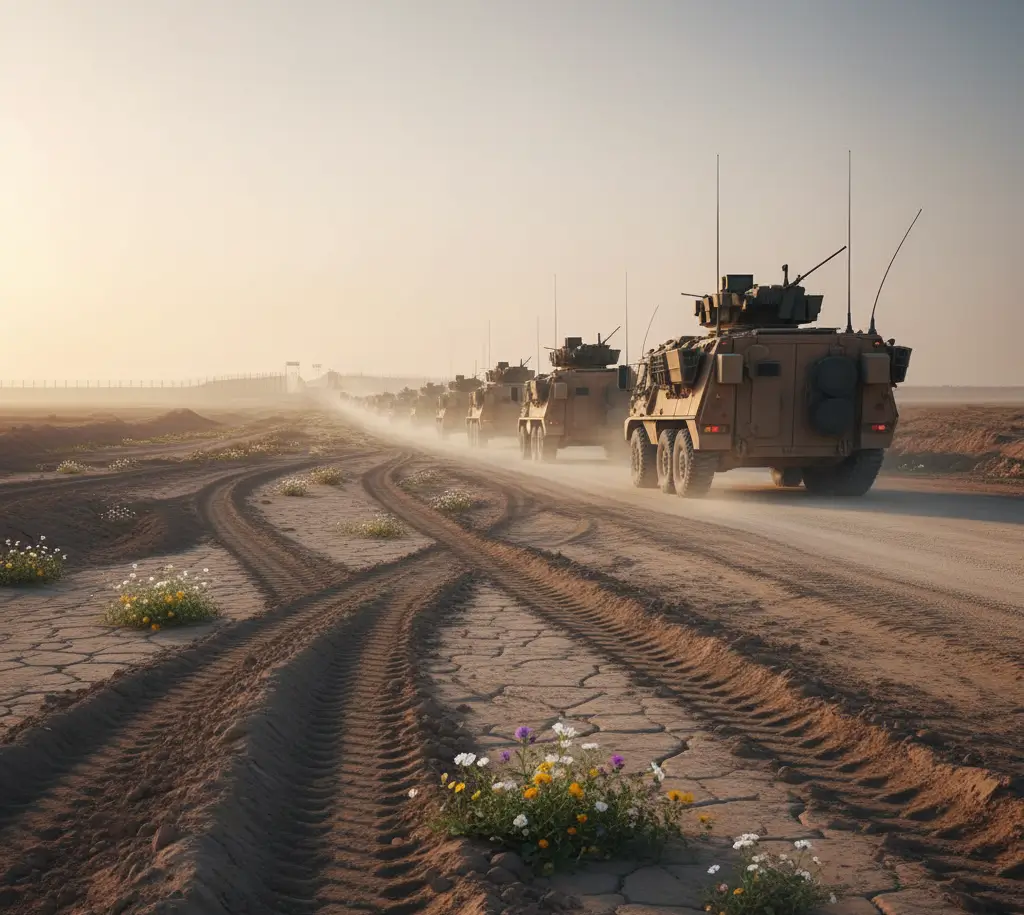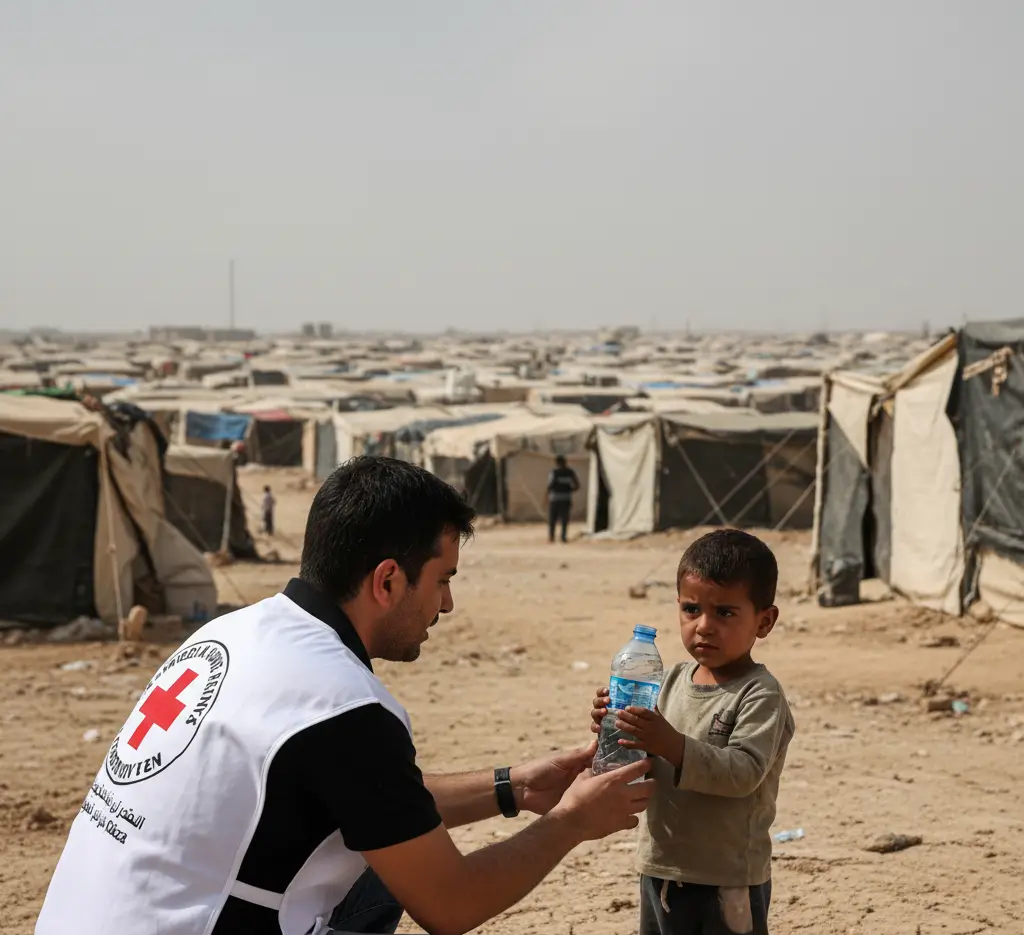Israeli forces have started withdrawing, and officials expect hostage releases within 72 hours as the US-brokered accord enters its implementation phase. However, reports that Israel breaks the ceasefire leave locals cautious amid the devastation.
Israeli forces started to leave the besieged enclave on Friday, as civilians returned to find their neighborhoods in ruins as a historic ceasefire came into effect. Israel’s cabinet approved the US-brokered agreement, which includes 72-hour hostage and prisoner exchanges, leading to its implementation. However, claims that Israel breaks the ceasefire in some regions have caused tensions to rise.
On the Ground: Troop Withdrawals, Cautious Returns as Israel Breaks Ceasefire

The Gaza ceasefire implementation saw immediate changes on the ground Friday, though the transition remained fragile:
Military Movements:
- Israeli forces withdrew from southern Gaza’s eastern Khan Younis.
- Forces demolished positions in the central Gaza camp of Nusseirat.
- partial retreat toward Gaza City along the Mediterranean coast
- Despite the ceasefire, there were reports of some gunfire and tank bombardment.
Civilian Response:
Thousands of displaced Palestinians returned to their hometowns and found them destroyed. “Thank God my house is still standing,” said 40-year-old Ismail Zayda from Gaza City’s Sheikh Radwan neighborhood. “But everything around me is destroyed — my neighbors’ houses and entire neighborhoods are gone.”
The emotional return was tempered by uncertainty. “Is it over? They said it is. Why does no one come out and tell us whether there is a ceasefire and we can stop being afraid?” Zayda added.
US Guarantees and International Monitoring

The breakthrough occurred after President Donald Trump personally promised Hamas, via mediators, that he would not permit Israel to back out of the ceasefire in Gaza, as had happened with an earlier agreement in March.
Key US Commitments:
- The US deployed 200 troops as part of an international monitoring task group.
- Joining the force are military officers from Egypt, Qatar, Turkey, and the UAE.
- The United States will not send troops straight into Gaza.
- Trump personally participated in the last round of talks and called for mediators several times.
A US official revealed that Trump’s envoys Jared Kushner and Steve Witkoff delivered a clear message: “The president wanted to make it clear that this deal was significant to him, that he wanted it to happen, that he wanted to end the carnage, and that he wanted to make sure everyone understood he would enforce good conduct.”
Implementation Timeline and Next Steps
The Gaza ceasefire agreement follows a strict timeline:
Phase 1 (First 24 hours):
- Israeli forces withdraw to the agreed perimeter inside Gaza
- Full suspension of hostilities
- Humanitarian aid begins flowing into Gaza
Phase 2 (Next 72 hours):
- Release of all 20 living Israeli hostages
- Exchange of Palestinian prisoners
- Recovery efforts for the deceased hostages’ remains
Future Phases:
- Deployment of the international stabilization force
- Dismantling of Gaza’s military installations
- Long-term governance discussions
- Reconstruction planning
The International Committee of the Red Cross confirmed it stands ready to assist with hostage and prisoner releases. “The coming days are critical… the ceasefire must hold. Lives depend on it,” said ICRC president Mirjana Spoljaric.
Humanitarian Crisis and Reconstruction Challenges

The scale of destruction presents immense challenges:
Current Situation:
- Palestinians lost at least 67,000 lives during the two-year fighting.
- Hundreds of thousands took shelter in tents after their homes were destroyed.
- The majority of Gaza’s hospitals and infrastructure were destroyed.
- Children go three years without attending formal schooling.
Immediate Needs:
The leading Catholic in Jerusalem, Cardinal Pierbattista Pizzaballa, called the suffering “morally unjustifiable,” stressing that “everything has to be rebuilt anew” and expressing worries about “the future of the children” following years of not receiving an education.
Rescue workers began missions in previously inaccessible areas, recovering at least 10 bodies from earlier strikes in Gaza City on Friday alone.
FAQs
This represents the first phase toward ending the conflict, with Hamas leader Khalil Al-Hayya stating he received US guarantees that the war is over, though previous ceasefires have collapsed.
Israel will release all living hostages within 72 hours after completing its withdrawal, expected by Monday.
Initial withdrawals include parts of Khan Younis, Nusseirat, and coastal areas into Gaza City, with forces moving to an agreed perimeter.
200 US troops will join an international task force with officers from Egypt, Qatar, Turkey, and the UAE to monitor compliance, though no Americans will enter Gaza.
While many are returning, some gunfire and shelling continue, and extensive destruction makes many areas uninhabitable.
Do you believe this ceasefire will lead to lasting peace, or are the challenges of reconstruction and political disagreements too significant? Share your perspective in the comments.
Want more? Subscribe to Thriver Media and never miss a beat.















